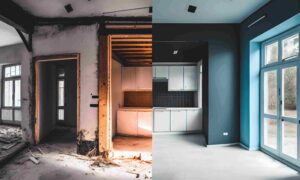
Since building an outdoor pool can be expensive, careful planning and budgeting are essential. A well-thought-out financial plan guarantees that you will maximize the return on your investment and continue to enjoy your pool for many years to come. Setting reasonable spending limits, giving features top priority, and looking into affordable financing options are just a few of the crucial budgeting advices covered in this article for building a pool.
Creating a Budget That Is Realistic
The first step in outdoor pool construction is setting a budget. Find out how much above-ground and inground pools cost in your area. Decking, fencing, landscaping, and maintenance costs should be added to construction costs. Consider associated permissions and inspections. Your budget should include 10–20% for building surprises. Communicating with contractors about your budget will alleviate financial stress.
Prioritizing Features
Once you know your budget, prioritize pool features with the best swimming pool financing. Determine needs and wants. A good pool pump and filter system can trump pool lights. Will you utilize your pool for entertaining, family fun, or house value? If your characteristics meet your pool aim, you can distribute funds more efficiently and focus on high-return areas.
Exploring Cost-Effective Financing Options
If you need budget flexibility, explore different financing options to control building expenses. Consider personal, home equity, or pool loans. Compare interest rates, terms, and prices to find the best deal. Additionally, several home improvement lenders offer pool-specific loans with attractive terms. Check for local government subsidies or incentives for energy-efficient pool features like solar heating.
Making the Most of Your Investment in Construction
To maximize pool construction value, choose trustworthy contractors and do your research. Get many quotes and check each contractor’s references and experience. Choosing a trustworthy contractor upfront may save you money on maintenance and repairs later. Negotiate the task scope to cover necessary features within budget. Discuss cost-effective options including energy-efficient pumps and durable pool liners.
Planning for Future Expenses
Pool maintenance, utilities, and insurance are ongoing costs. Prepare for these fees in advance because they can add up quickly. A monthly budget should cover annual maintenance costs including repairs, cleaning, and chemicals. Reviewing and changing your homeowner’s insurance to cover your new addition is also recommended. Consider pool ownership liability and property value rises when calculating insurance needs.
Conclusion
Setting up money for the building of an outdoor pool can seem difficult, but with careful preparation, you can still enjoy your investment and stay financially stable. You can make sure your pool installation maximizes value and improves your house and enjoyment by setting a reasonable budget, giving priority to necessary features, looking into financing alternatives, and planning for upcoming costs. You may design an oasis that will provide you happiness for years to come if you give it some thought and do your homework.



